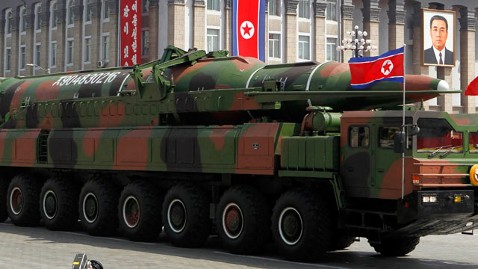North Korea's Missiles Are Fakes, Analysts Say

Image Credit: Ng Han Guan/AP Photo
North Korea tried to flex its military might with an extravagant parade on April 15, just three days after it admitted that its missile test had been a failure, but analysts now say that the new intercontinental ballistic missiles on display in the meticulously choreographed parade were nothing more than props.
The analysts studied photos of the six missiles and came to their conclusion for three primary reasons: 1. The missiles did not fit the launchers that carried them. 2. The missiles appear to be made out of both liquid-fuel and solid-fuel components that are unable to fly together. 3. The casings on the missiles undulate which suggests the metal is not thick enough to hold up during flight.
"There is no doubt that these missiles were mock-ups," Markus Schiller and Robert Schmucker, of Germany's Schmucker Technologie, wrote in a paper recently posted on Armscontrolwonk.com. "It remains unknown if they were designed this way to confuse foreign analysts, or if the designers simply did some sloppy work."
The unveiling of the missiles received international attention during a week of celebrations that marked the 100th anniversary of the birth of North Korea's founder, Kim Il Sung. David Wright, co-director of global security at the Union of Concerned Scientists, says attention is exactly what North Korea wanted.
"We've seen them play this game before. This kind of trying to manipulate in order to exaggerate your military force is certainly not anything new," Wright told ABC News. "We don't know if there is actually something behind it. We don't know whether they have simply put out mock-ups to suggest they are further along than they are. We don't know how far along they are beyond that."
Wright believes that because of the type of missile North Korea unveiled and the fact that the country has performed few flight tests "the missile program is at a fairly early stage."
"Without flight tests it's very hard to develop long range missiles," Wright said. "While they may be working on things the program is not progressing terribly fast."
Schiller and Schmucker agree, calling North Korea's display a "dog and pony show," and arguing that "there is still no evidence that North Korea actually has a functional ICBM."
North Korea's history of ICBM testing has been one of failure. Since 1998, it has launched four ICBM-style rockets, not one has been a success.
The Associated Press contributed to this report.